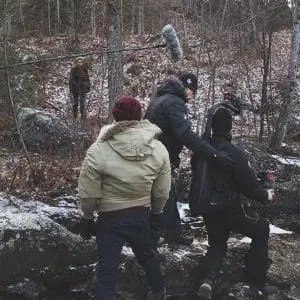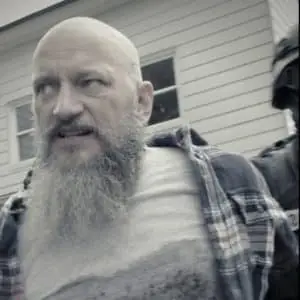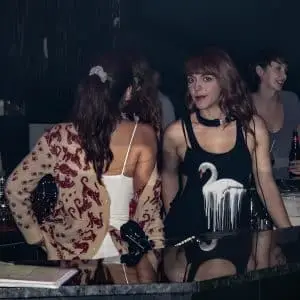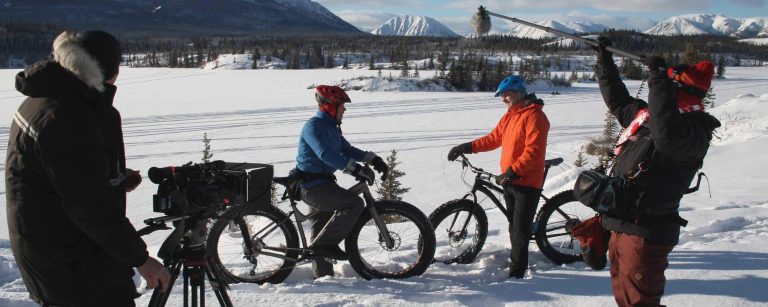The Revival of Film Cameras in Modern Cinema
In recent years, we’ve witnessed a remarkable resurgence in filmmakers choosing celluloid for principal photography. The 2024 Oscars nominations vividly highlight this trend, with a notable dominance of films shot on formats ranging from Super16 all the way to IMAX. Kodak, the leading manufacturer of color negative film, struggles to meet soaring demands, while the few remaining film laboratories are overwhelmed, barely keeping pace with the increasing workload. Meanwhile, scanner manufacturers scramble to offer new telecine options capable of meeting modern 4K and 6K standards.
Yet, despite this renaissance, no part of the film pipeline faces more challenges today than the camera itself. Historically, filmmakers navigated two distinct paths: either opting for the specialized Panavision universe or choosing among other manufacturers. While Panavision continues to maintain its revered 35mm and 65mm camera lineup, no genuinely new Panavision model has emerged in over two decades.
Stepping outside the Panavision sphere reveals an even more stark reality—no new 35mm film cameras are being manufactured today. Major camera producers that flourished through the late 1990s and early 2000s have either ceased operations or abandoned film camera production entirely. After acquiring Moviecam, ARRI introduced the Arricam system in the early 2000s, widely recognized as the most advanced 35mm camera ever made, integrating state-of-the-art technology.
Bring the Aaton Penelope to Your Set Today
Ready to shoot with the last 35mm camera ever made? The Aaton Penelope is fully prepped and production-ready—contact us today to bring its cinematic magic to your next project!
Fast forward 20 years, and the situation is dramatically altered. During the digital revolution, film cameras were often discarded, presumed obsolete as Fuji ceased film production and Kodak’s survival seemed unlikely. Many Arricam systems suffered an unfortunate fate—sold cheaply on eBay or stored indefinitely, destined to become props or nostalgic decoration pieces in studios and film schools.
Unexpectedly, film made its triumphant return, creating a decade-long void in the continuity of camera maintenance and availability. Today, filmmakers face numerous hurdles: maintenance issues, limited spare parts, reduced technical support, and general unreliability associated with vintage electronics. Although classic cameras like the ARRI 35BL3, BL4, or 35III could seemingly withstand nuclear fallout, modern filmmakers require different features—HD video taps, lightweight builds, and compatibility with stabilization systems like the Ronin2.
Currently, the preferred models among cinematographers are the Arricam LT and the ARRI 235, closely followed by the heavier Arricam ST, Moviecam Compact MK2, and the elusive Moviecam SL2. However, one often overlooked option rivals the sophistication of the LT and surpasses the compactness and agility of the ARRI 235.
Enter Aaton Penelope—the final and most advanced 35mm camera ever crafted, offering filmmakers a blend of modern versatility and traditional excellence.
Aaton Penelope: History and Innovation
Aaton doesn't need extra introductions, but here are some facts to refresh the memory:
Aaton, founded by French filmmaker Jean-Pierre Beauviala in Grenoble in 1971, revolutionized motion picture camera design with innovations focused on mobility, ergonomics, and ease of use. Beauviala, an engineer with a passion for filmmaking, founded Aaton after becoming frustrated by cumbersome film equipment available at the time. His vision was to create cameras that felt natural and unobtrusive, “like a cat on your shoulder.”
In 1973, Aaton launched the Aaton 7, a groundbreaking 16mm camera known for its ergonomic design, quiet operation, and portability. Its compactness made it ideal for documentary filmmaking, revolutionizing cinema vérité-style shooting. Subsequent models such as the LTR (1975) and XTR (1983) further solidified Aaton’s reputation among independent filmmakers due to their reliability, silence, and intuitive handling.
The 1980s marked significant growth for Aaton, with the introduction of AatonCode (1984), an innovative timecode synchronization system allowing precise audio and picture sync, vastly simplifying the post-production process.
In 1989, Aaton expanded into 35mm filmmaking with the Aaton 35-III, noted for its compactness, ergonomic design, and exceptional stability. Later, the Penelope (2008) represented one of their most advanced 35mm cameras, boasting superior image stability, reliability, and flexibility, including a hybrid capability for both film and digital imaging.
Penelope's History: A Bold Leap in Camera Design
The Penelope camera holds a distinct place in cinematography history—unique, bold, and advanced in design, traits synonymous with all Aaton creations. However, according to the author of this article, Penelope stands out as the most radical and comprehensive innovation by Jean-Pierre Beauviala. Why? Unlike the incremental advancements that characterized the 16mm LTR/XTR/X-Tera lineup developed over three decades, Penelope represented an audacious leap of faith.
What Makes Penelope Exceptional?
Ultra Compact and Lightweight: Penelope was remarkably compact and lightweight, uniquely designed for seamless operation. It supported both 3-perf and 2-perf modes, embracing the Super35 standard with the prevalent 16:9 aspect ratio. Beauviala envisioned Techniscope as a standard feature, boldly moving away from traditional 4-perf setups unless specifically shooting anamorphic.
Unmatched Quietness: Unlike its predecessors, which barely passed as sync cameras, Penelope was genuinely silent. Its operation was so quiet that operators often relied solely on the viewfinder’s flicker to confirm the camera was running.
Packed with Advanced Features: Beauviala strategically avoided creating an independent optical path and instead collaborated with Munich-based specialists P+S Technik. Although the viewfinder was slightly compromised compared to Arricam or Moviecam counterparts, it was bright, adjustable, and compatible with ARRI accessories, featuring a glow system for frame identification. Given the camera’s significantly smaller size and lighter weight, this minor compromise was a worthy trade-off.
Revolutionary Ergonomics: Penelope embodied ergonomic excellence, epitomizing Aaton’s legendary “like a cat on your shoulder” principle. Its body, made from lightweight plastic and carbon materials, enhanced ease of handling and sound dampening. Additionally, it supported dual 16V Li-ion batteries capable of sustaining a full shooting day.
Cutting-edge Electronics: Penelope’s electronic features closely resembled modern digital cameras. The robust analog PAL or NTSC video assist provided real-time frame lines, footage counters, and lens data display through LDS. Aaton’s famed on-film timecode was fully integrated. Notably, its minimalist, cable-free design employed a single coaxial cable for video transmission. An intuitive control interface on the assistant camera side offered comprehensive, user-friendly access.
Visionary Hybrid Potential: Beauviala envisioned Penelope as the first genuine film-digital hybrid camera, designed to switch effortlessly between film mags and a digital back. Regrettably, this visionary aspect never progressed beyond the prototype stage.
In essence, Penelope was not just another camera—it was Beauviala’s daring reinvention, merging radical innovation with practical elegance, a testament to his legacy in film technology.
Now, the reader of these lines is probably asking the most important question: If the Penelope was such an advanced and well-designed camera, why haven’t we seen it more often, and why didn’t it become the go-to choice during the recent celluloid renaissance? Furthermore, one might wonder, is there still room for Penelope today? Finally, and perhaps most importantly, could Penelope serve as the inspiration for a new 35mm camera, the first in over 20 years?
To answer these questions and further explore the Penelope story, I visited our longtime collaborators and friends at Cineground, a passionate group of film enthusiasts based in Montreal. Christophe Colette CSC, Nicolas Canniccioni, Maxime Lapointe Deroy, and Luka Sanader, in partnership with Cineground, have assembled a remarkable collection of fully modernized and production-ready 35mm cameras, including two Penelope models. To dive deeper into the subject, I met with Luka Sanader, an East European cinematographer who has lived and worked in Montreal for over 20 years, collaborating on numerous Film Solutions projects. In Cineground’s cozy facilities, we examined their impressive Penelope setup firsthand.
What Makes the Penelope Exceptional?
Interview with Luka Sanader: Penelope’s Rarity
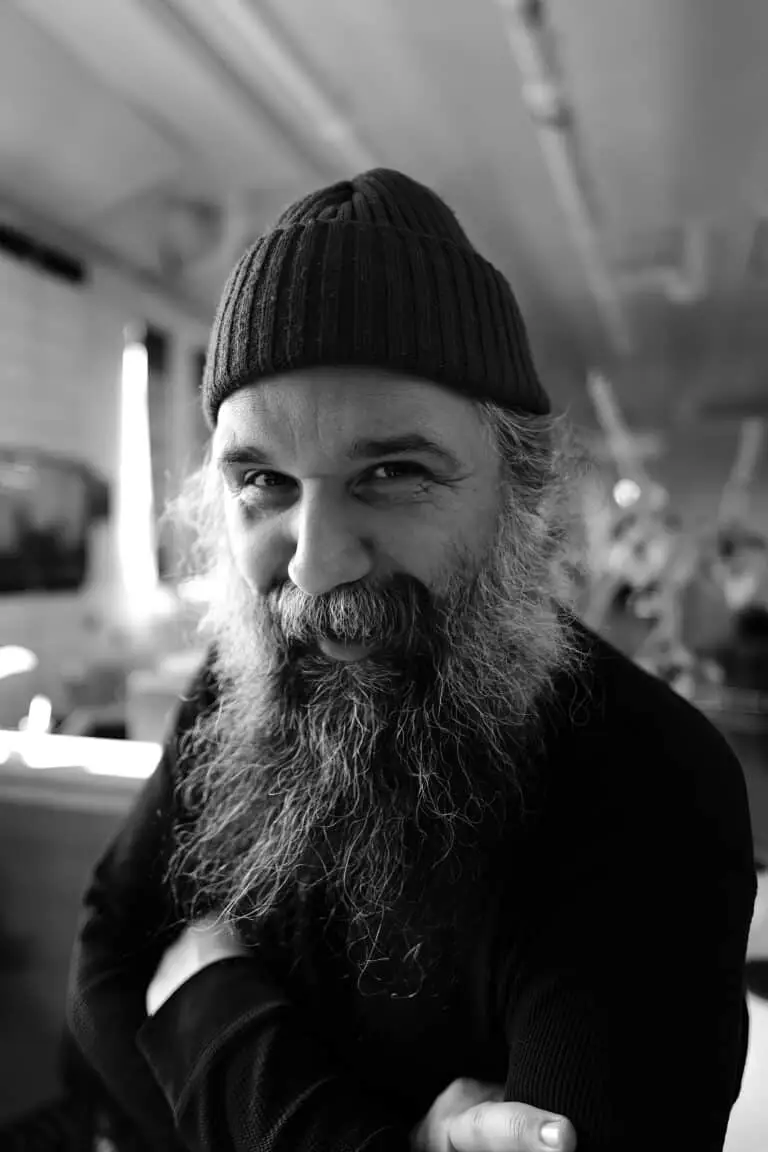
To explore the legacy of the Aaton Penelope, the last 35mm camera ever made, I spoke with Luka Sanader, a seasoned cinematographer with over 20 years of experience. In our interview, Luka shared his hands-on insights with this rare camera, shedding light on its unique features and enduring appeal. His expertise reveals why the Penelope remains a standout in the world of modern filmmaking.
Richard Duquette: Why aren’t Penelopes the top choice for cinematographers today, and why do we know so little about them compared to cameras like Arricam or the ARRI 416?
Luka Sanader: It’s quite simple—only 48 Penelopes were ever made! ARRI was a filmmaking gear giant, a true industrial powerhouse, while everyone else, including Panavision, was essentially running boutique operations. Jean-Pierre Beauviala was undoubtedly a genius in camera design, but he frequently struggled to finance his R&D and keep up with industry demands. It’s astonishing what Aaton achieved despite limited resources. Penelope is nothing short of a miracle, given the numerous times the project could have been abandoned. Its predecessor, the Aaton 35III, wasn’t popular—noisy with notoriously difficult-to-load mags. To run it smoothly, you needed seasoned Camera Assistants experienced with Aaton systems. Convincing the market that Penelope would be different was never easy for Jean-Pierre.
RD: Is your affinity for Penelope connected to your European roots? Were these cameras popular there?
LS: Not at all. Europe is ARRI territory. Aside from some Panavision shops in the UK and France, Penelopes were almost nonexistent. The legend goes that half the cameras produced ended up at Panavision, leaving possibly no more than 20 in circulation worldwide. Interestingly, my first encounter with Penelope was actually in Montreal—I never shot with one until we acquired ours. It always had this mystical status, alongside horror stories of unreliability and drama.
Ultra Compact and Lightweight Design
RD: Were they genuinely unreliable?
LS: Absolutely not! Penelope is exceptionally well-built and highly reliable. It has its peculiarities and requires proper maintenance, but aside from that, it’s rock-solid. There’s a myth that it’s challenging to load, stemming from the troublesome Aaton 35III mags. In reality, Penelope mags are the easiest 35mm mags to load—but they’re sensitive. If a second assistant camera isn’t experienced, loading mistakes are easy to make. Mags have a floating pressure plate system reliant on elastic backplates, which need periodic replacement due to their rubber composition. A Penelope mag is not as robust as an Arrimag120; you wouldn’t use it after 20 years of storage at high speeds without servicing. The camera employs magnets for the pressure plate and a magnetic clutch transferring motion from the motor to the mag, which can cause issues in extreme cold temperatures. Penelope performs beautifully when respected but doesn’t tolerate abuse.
RD: Why did Cineground choose to buy not one but two Penelopes?
LS: The opportunity was simply too good to pass up—a once-in-a-lifetime chance. We’re all dedicated film shooters. Christophe and Nicolas have consistently championed film, and we knew that updating the Penelopes to modern standards would make them highly usable. It was challenging and expensive but ultimately rewarding. Moreover, the Penelope’s 2-perf capability is unmatched. Upgrading them involved a learning curve, but we found great support in a community of true enthusiasts who continue to nurture the love for film. Our team of technicians at Cineground is rock solid, and our head technician Marianne Ploska is a passionate film camera person. We have all it takes to run them for years to come.
RD: Let’s dive deeper into 2-perf and Penelope’s unique offering—why does it matter today?
LS: At this point, our readers are likely already familiar with the technical specifics of 2-perf—but let’s summarize briefly. In essence, 2-perf is a budget-friendly alternative that allows filmmakers to shoot 35mm film at roughly half the stock and processing costs, delivering an economical yet high-quality widescreen format. The catch? It’s an extremely specialized and somewhat limited choice in terms of available cameras today. If you wish to shoot sync sound narrative films in 2-perf, your modern-day options narrow dramatically, effectively placing you into Arricam territory or pushing you to vintage Techniscope gear from the 1970s—an adventurous but risky move. Bruce from Aranda Films in Australia has modified a handful of Kinor H35 and ARRI BL4 cameras, but these remain incredibly rare—perhaps fewer than ten exist worldwide.
Here lies the dilemma: filmmakers turning to 2-perf in 2024 typically do so with budget-conscious intentions, aiming to achieve a cinematic aesthetic at significantly reduced costs. However, renting an Arricam system—specifically configured for 2-perf—from high-end vendors like ARRI Rental can paradoxically place filmmakers into a premium pricing bracket akin to renting Panavision gear. This inherently contradicts the economic appeal of shooting 2-perf in the first place. And here’s exactly where the Aaton Penelope shines brightest: it bridges the gap between affordability, reliability, and professional-level features. Penelope delivers the compactness, reliability, and ease of use demanded by contemporary productions operating on streamlined budgets.
RD: Are there notable limitations when shooting 2-perf on Arricam or Penelope, especially within narrative filmmaking contexts?
LS: Certainly. Shooting 2-perf inherently carries its unique set of challenges. The frames are vertically stacked very tightly—even more compactly than in Super16. This means gate cleanliness becomes absolutely critical. A tiny speck of dust or debris can easily ruin a take. The format is sensitive to gate bleeding, particularly in high-contrast or strong backlit scenarios. This isn’t exclusive to Penelope; the same limitations apply equally to Arricam systems. This is why filmmakers commonly opt to crop slightly into the full 2.35:1 aspect ratio, offering some small margin of safety at the edges. Of course, nothing provides the sheer peace of mind of traditional 4-perf 35mm. Add to these inherent challenges the uncertainty of older equipment, and stress can rapidly escalate. But when you have a meticulously maintained, well-updated camera like the Penelope, you gain invaluable confidence. That’s precisely what we strive for at Cineground, where our Penelope inventory stands unique, especially on the East Coast: we offer two fully upgraded camera bodies along with nine fully serviced mags, all primed and ready for feature film shoots. As a cinematographer who’s spent three decades shooting on film, I deeply understand that unique anxiety—waiting nervously for rushes, unsure of what precisely you’ve captured. Combine that pressure with outdated equipment patched together with Velcro, aging mags prone to scratching or jamming—it’s a scenario no DP willingly embraces. That’s why the assurance of reliable equipment is essential. With our dual-body setup, filmmakers have the comfort of knowing that an “A” camera can be operating on set while a fully prepped “B” camera remains available as a standby. This level of redundancy provides immense reassurance on a demanding narrative production.
RD: You mentioned updating Penelope cameras to modern production standards—can you elaborate on how a 20-year-old film camera gets adapted to fit into contemporary workflows?
LS: Absolutely. Penelope was ahead of its time in many ways, especially regarding integrated video assist systems. However, the original analogue video assist from that era no longer meets the expectations of modern productions. Today’s directors, producers, and ACs are accustomed to HD monitoring with real-time camera data overlays—footage counters, take countdowns, lens metadata, and more. To bridge this technological gap, we collaborated closely with Andrew from AZ Spectrum in New York, who masterfully executed a substantial upgrade on our Penelope systems. Now, our cameras feature fully integrated internal HD video taps with full HD-SDI output, significantly enhancing both on-set monitoring and the client-director experience. Importantly, this upgrade preserves and extends the original camera commands—allowing critical camera data (lens information, take numbers, remaining footage, etc.) to be displayed in real-time and relayed seamlessly to video village, script supervisors, and assistants. Moreover, these upgrades facilitate seamless compatibility with contemporary lens control systems and accessories like ARRI’s L-Cube, Cforce Mini, UDM-1, Cine RT, and more. Each component has its dedicated integration point and custom cable setups, enabling crews to rig the Penelope quickly and efficiently, very similarly to how one might configure an ARRI Mini LF or similar modern digital camera. The only notable limit remaining is the absence of full remote camera control via devices such as ARRI’s Hi-5 or WCU-4 hand units—you can remotely trigger start/stop and open the gate, but deeper camera control must remain manual. However, power solutions have also evolved substantially, and we’ve even re-celled original onboard battery packs and provided options for Gold Mount compatibility. In essence, our Penelope systems deliver a comprehensive solution, robust enough to meet modern narrative production demands.
RD: Finally, how do you envision the future of film as a medium?
LS: Film is here to stay—it’s firmly carved out a niche market precisely because it provides something uniquely tangible and special. Yes, digital tools like FilmConvert offer remarkable film emulation, but ultimately they’re just that—emulations. Shooting film isn’t just about the aesthetic; it’s an entirely different experience, infused with its own unique energy. Film sets breathe differently—there’s a collective reverence, a kind of cinematic mystique that’s impossible to replicate digitally. As long as Kodak continues manufacturing film stock, film production will persist. However, there’s a significant bottleneck on the horizon—camera availability. Modern, professional-grade film cameras like Arricams and Aaton Penelopes are limited in quantity and facing inevitable mechanical and electronic challenges as time passes. Even iconic cameras like the ARRI 416 are becoming harder to service as essential spare parts become scarce. Without dedicated manufacturers producing new 16mm and 35mm cameras—or even more ambitious formats like VistaVision—the future will become increasingly challenging. Jean-Pierre Beauviala’s original vision with the Penelope—combining film tradition with digital adaptability—was incredibly prescient. Perhaps the answer moving forward lies precisely there: hybrid, compact, fully digital-interface-equipped film cameras built from carbon fiber, with advanced electronic viewfinders, contemporary lens metadata systems, and seamless integration into modern workflows. If drone technology can be continually advanced and miniaturized, surely we can engineer robust, contemporary film cameras.




